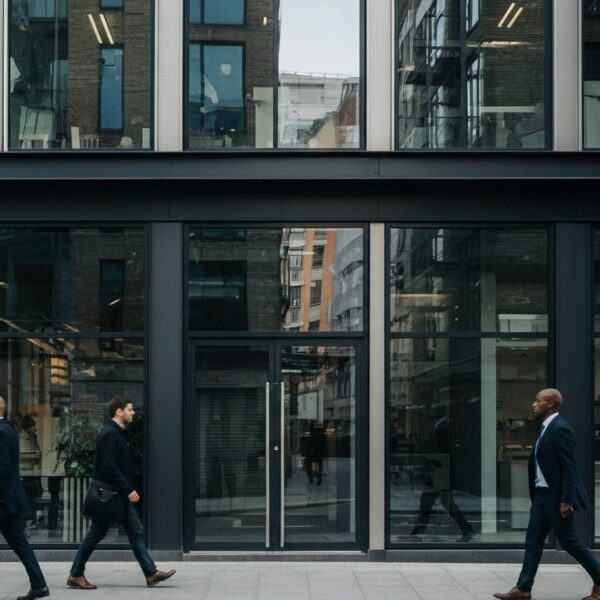Office space is no longer just about the desks inside. It is now a direct lever for speed, culture, and growth. The big decision in 2025 is whether companies tie themselves into long leases or switch to flexible and managed models shaped around how modern teams actually operate. Understanding the three main workspace models is the first step.
What are the three workspace models?
For years, companies defaulted to leased offices. That model is now under pressure. Whether serviced or not, the market has fragmented into three clear approaches that speak to different growth needs.
- Flex (or flexi), Flexible office space that is ready today. Contracts are short term, offices are often serviced. Options include shared or private offices. Amenities like breakout zones, coffee areas, high-speed internet and meeting rooms are often included in the service fee, or offered as flexible add ons at a published rate.
- Managed, A step up from flexi. These spaces are private, branded, sometimes sub-let, and tailored to team culture. You can often sign a shorter contract but typically gain more control over layout and identity than flexi.
- Leased, Still the most familiar office space model. Companies take on multi-year commitments, usually fund their own design and fit out, and manage everything from utilities to cleaning. It is expensive and slow to scale.

Why did flexi office space take off?
Contrary to the early perception, flexible offices were never just for freelancers or sole traders. The surge came when startups and SMEs realised providers had replicated the blueprint of big tech campuses. Curated, experience-rich environments once available only to the largest players became accessible without major upfront investment.
By 2024, the shift became measurable. BNP Paribas Real Estate reported that 30% of all UK office take-up was in flexible or managed space.
Expert Market Research projects the UK flexible workspace sector will be worth two billion $USD in 2025, growing to over three billion dollars by 2030 thanks to an 11.4% CAGR. Flexible is no longer fringe, but a mainstream choice.
How do office leases compare today?
Traditional leases are not dead, but they are changing. The Re-Leased State of CRE Leasing Report 2024 showed the average UK office lease term rising from 2.9 years in 2023 to 3.7 years in 2024. Many firms still want stability, but in cycles far shorter than the old 10 to 20 year commitments.
The question has shifted: it is no longer about office or no office, but about how quickly you want to move, how much capital you can commit, and whether your workspace keeps pace with growth.
Why does flexibility matter when growth is unpredictable?
No scaling start-up company can forecast headcount with absolute precision. A year can bring new funding, a pivot, or a pause. Traditional leases lock you into fixed square footage regardless of what happens next.
Flexi and managed space remove this risk. You can expand or contract with minimal disruption while keeping your team in the same environment.
Speed is equally critical. Growing firms do not have months to wait for fit-outs or plan major capital expenditure. In a leased model, even sourcing furniture can slow momentum.
Flex space eliminates this delay with immediate availability and core infrastructure in place.
Capital requirements are another factor. Leasing demands six or seven figure upfront costs for design, furniture, and operations. Flex and managed models convert these fixed costs into variable ones, keeping cash on the balance sheet.
For startups and venture-backed companies, that agility often makes the difference between seizing a market moment and missing it.

Why is managed space rising while traditional leases struggle?
Managed workspace has become the middle ground that both landlords and tenants were missing. Unlike short-term flex, it offers stability with agreements of 12 to 36 months.
Unlike conventional leases, it removes the upfront fit-out, service contracts, and operational headaches.
For companies between 20 and 200 people, this balance is proving particularly powerful in 2025.
For landlords, managed agreements offer higher yields and lower vacancy risk. For occupiers, they can often provide fully serviced plug-and-play office environments without the long-term lock-in.
Traditional office leases, by contrast, only suit businesses with stable business models and internal resources to manage estates. For high-growth firms, they increasingly look outdated and cumbersome, not to mention an IFRS 16 headache too for future investment a lot of the time.
Key reasons managed office space is surging:
- Pre-fitted, ready-to-use offices cut downtime
- Shorter commitment periods suit growth cycles
- Fully serviced contracts reduce operational strain
- Predictable monthly costs protect cash flow
- Spaces designed for hybrid models support culture and collaboration
This transition reflects a bigger question for leadership teams in 2025: is your office space helping propel growth, or is it slowing it down and proving a VC nightmare?
Why the right workspace choice decides growth in 2025
Companies must move faster and with less predictability to survive and thrive, yet traditional leases still tie them down with risk and rigidity. ADAPT exists to solve this gap.
With two decades of navigating the office workspace market, we have built relationships and expertise that help scaling teams cut through complexity and secure smarter solutions, flexi, managed, or hybrid, matched to their stage of growth.
Where a traditional lease demands capital outlay and inflexibility, ADAPT sources office spaces that are ready to go, culturally aligned, and financially efficient.
From finding off-market gems for a startup’s first office to tailoring managed environments for 100+ person companies, we protect clients from overspending, wasted time, and cultural compromise.

Our service is not just about securing four walls and a load of desks, it is about giving leadership teams the confidence that their workplace will not slow them down, whatever growth brings next.
Because we have worked with hundreds of businesses at every stage, we see consistent outcomes: faster onboarding, stronger team identity, better cash control, and an office space that feels like an asset rather than a liability.
That credibility is why so many founders return to ADAPT as their businesses scale.
Leases lock you into yesterday’s decisions. Our job at ADAPT is to give businesses office spaces that flex with tomorrow’s realities whether that means headcounts going bigger, or smaller, so they can focus on momentum and what they’re best at: growth. Not square footage.”
Chris Meredith, ADAPT CEO & Founder
What can you do to get ahead of office space decisions in 2025?
If your team is scaling, fundraising, or reshaping how it works, now is the time to reassess whether your office is holding you back, or moving you forward.
Committing to a rigid lease could drain capital and limit options just when agility matters most. Flexible and managed spaces do more than give you breathing room, they project confidence to investors, partners, and talent too.
ADAPT can help you find the right office space at the right moment, exclusive, flexible, and built for your stage of growth. That is the ADAPT difference: less risk, more opportunity. You can start your journey here.






